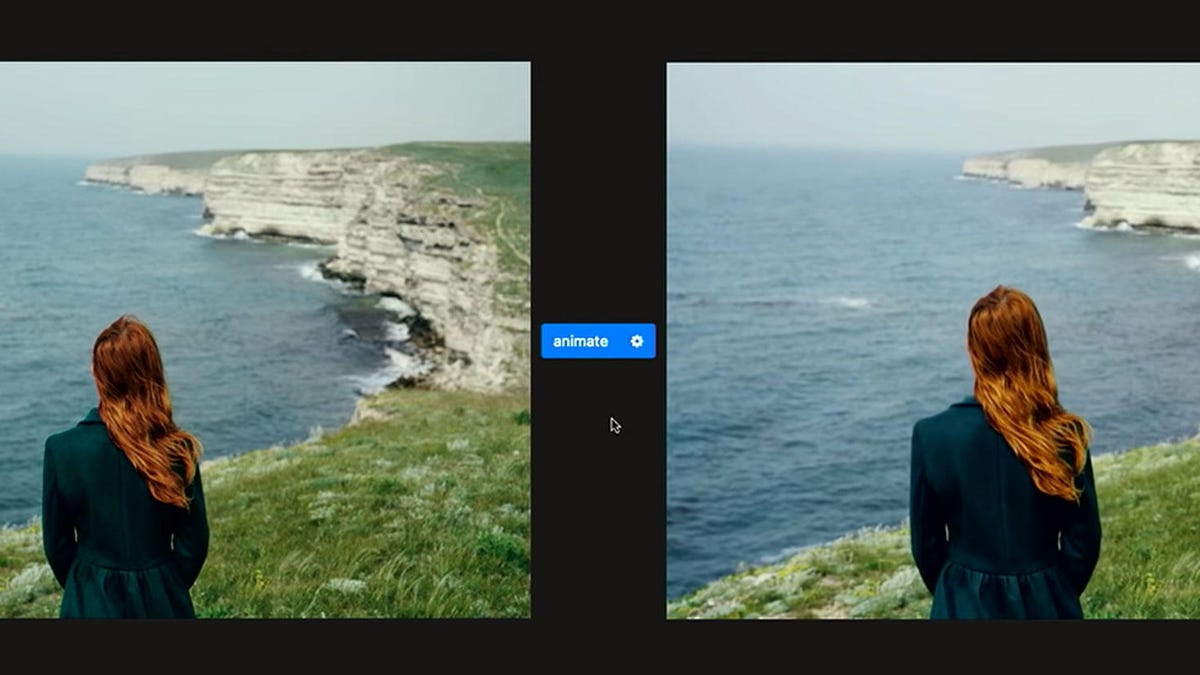Adobe Moving Stills tech adds 3D camera motion to still photos
Adobe Max sneak peeks show AI and automation for font styling, video cropping, illustration morphing and video subject selection.

Adobe's Moving Stills technology turns a still photo into a mini-movie.
A lot of companies are working on ways to turn static photos into something dynamic. For example, Apple's Live Photos for iPhones, LG's cinemagraphs on the V40, Google's Motion Stills app and Microsoft's Pix camera app. Now, imaging giant Adobe Systems is rolling its own approach called Moving Stills.
The technology divides photo elements into separate pieces and then alters their relative position to simulate the perspective shift of a moving camera. It'll make it look like you're approaching a person standing in front of a scenic backdrop or traveling past a mountain.
Adobe demonstrated Moving Stills on Tuesday at its Adobe Max conference, where it offers sneak peaks of projects its working on. All the sneak peaks won't necessarily turn into actual products, but plenty have in the past.
Think of Moving Stills as the Ken Burns effect on steroids and automatic. One demo showed some errors generating new imagery -- some weird clouds appeared in the blue sky above a mountain as the virtual camera position rose, and reflections in the water showed some impossible geometry as the view panned right. But for adding some freshness and depth to a snapshot, it seemed fun.
Adobe demo of Moving Stills technology.
Many of the demos used artificial intelligence -- specifically, Adobe's Sensei-branded version -- which helps with chores like recognizing different elements of a digital image. The work shows how computing is gradually catching up with human visual systems that intuitively understand concepts like depth, perspective, color and focus.
Here are some other ideas Adobe showed off:
- Project Fast Mask is designed to make it easier for video editors to select an object in a video so it can be isolated from a background or otherwise handled differently.
- Project Smooth Operator uses AI to track what's important in a video so it can be recropped for different publishing media, for example a portrait view for Instagram.
- Project Good Bones lets illustrators construct a digital skeleton to collectively control many elements that makes up a complex vector graphic.
- Fontphoria can recognize fonts and mimic their styling with a new typeface created on the fly.
- Project Kazoo recognizes spoken or sung voices and converts them into synthesized musical instrument tones.
- Brush Bounty is designed to let people paint moving imagery like blowing hair or falling rain onto a digital image.
- Fantastic Fold is designed to let box designers understand how flat cardboard will turn into a 3D box and add 2D graphics so it looks good when it's no longer flat.
- Project Waltz uses a smartphone to control the virtual camera motion around a 3D scene rendered inside a computer.
- Project Model Morph is designed to make it easier and more intuitive to edit 3D objects.

